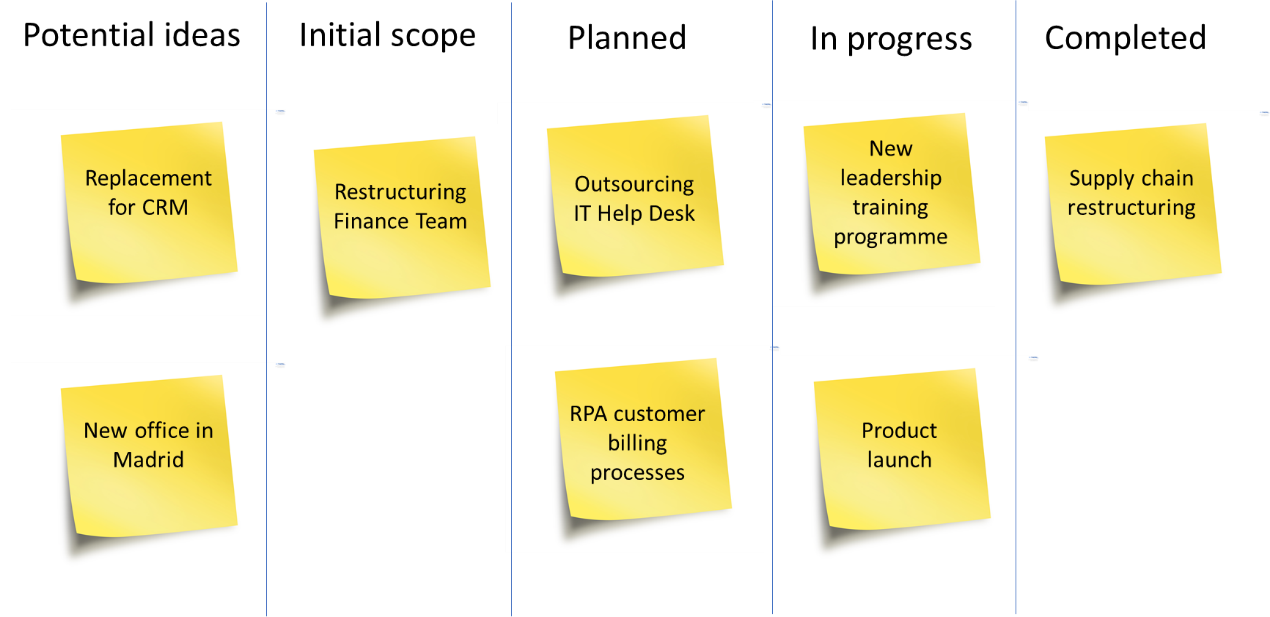Portfolio Management is the set of processes and activities that identify, prioritise and track the progress of all initiatives needed to achieve the strategic objectives.
The Portfolio is ‘single source of truth’, summarising all the known changes that an organisation currently believes is needed to get to where it wants to be. It is a very fluid situation as new ideas and new requirements are identified and added into the portfolio, whilst other ideas move through the stages of completion, or are abandoned as they are no longer needed.
Portfolio Management offers efficiency benefits as it prevents duplication of effort. It is only by seeing what has already been proposed and what is already underway that we can ensure that the scope of any subsequent initiatives is not duplicating or conflicting with existing work. Another benefit is that by creating a visual of all the changes, we can see the capacity the organisation has for yet more change, as we probably have more ideas than we have resources for!
Effective portfolio management needs to be visible and transparent, so that all those affected by the initiatives can see what is underway and what is coming up next. I find the use of a Kanban Board creates this visibility, if it is backed up at each stage by quality criteria that confirm the value of an initiative prior to its move into the next column on the board:

In this example, ideas are added to the portfolio as a result of horizon scanning by staff at all levels, contributing ideas about how their organisation can improve. All ideas are added into the portfolio at this point, so that nothing gets missed.
Only those ideas that have been evaluated against cost/benefit criteria to assess if they have sufficient value are included in the column to indicate they are to be scoped in more detail. If they are valuable, we also need to decide if they are vital – use the MoSCoW prioritisation method to identify the Must Have initiatives from the Should Haves, the Could Haves and the Won’t Haves.
The potential scope of the initiative is researched and a vision statement created. Once this scope has been compared with other initiatives in the portfolio and proven not to be a duplication of effort will it move into the Planned column.
Only those initiatives whose plans can be shown to viable are authorised. The criteria for this evaluation can be extensive but critically, using the criteria ensures that all initiatives are evaluated like for like so the value of each can be easily compared.
This column serves as a record of all the changes that have taken place, and are a useful source of comparison for new ideas to ensure that there is no repeat of previous ideas.
I hope you find this useful, but for more information click here for a paper explaining portfolio management in more detail.
